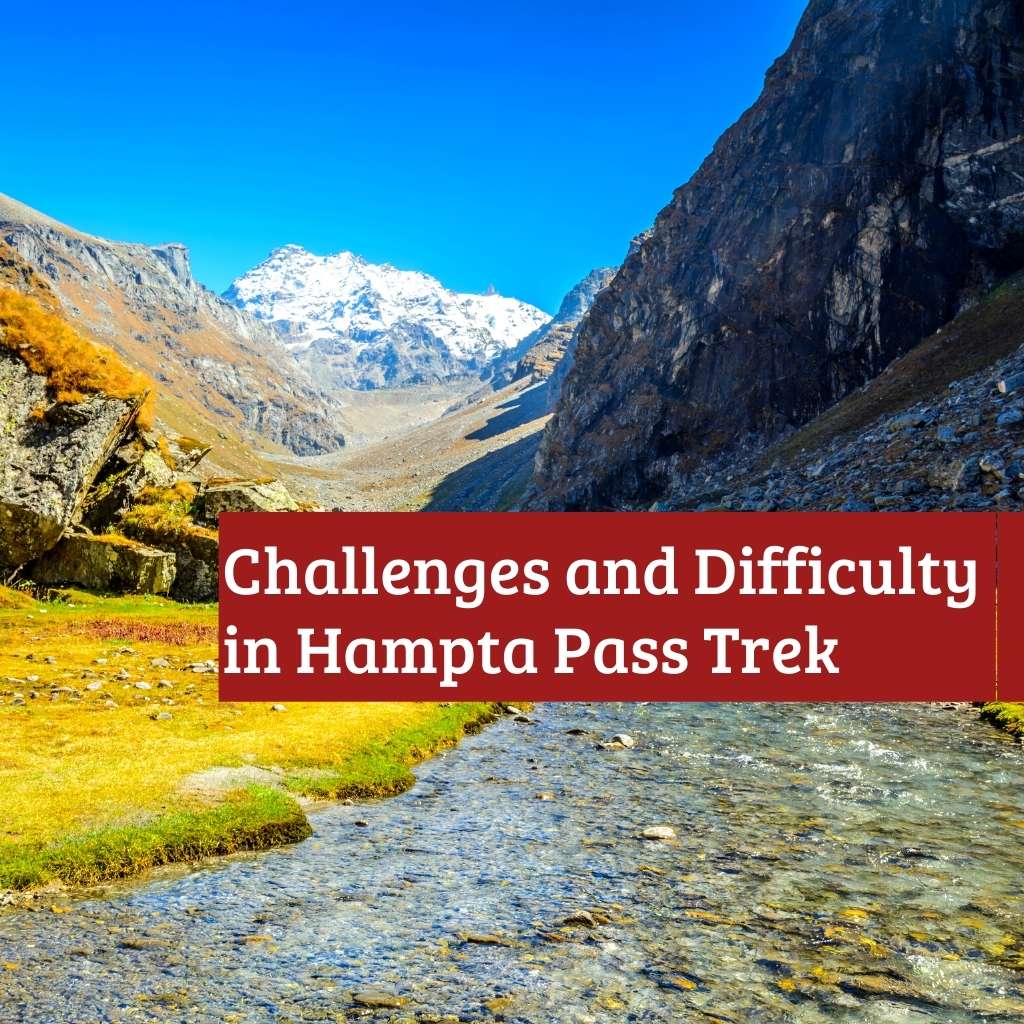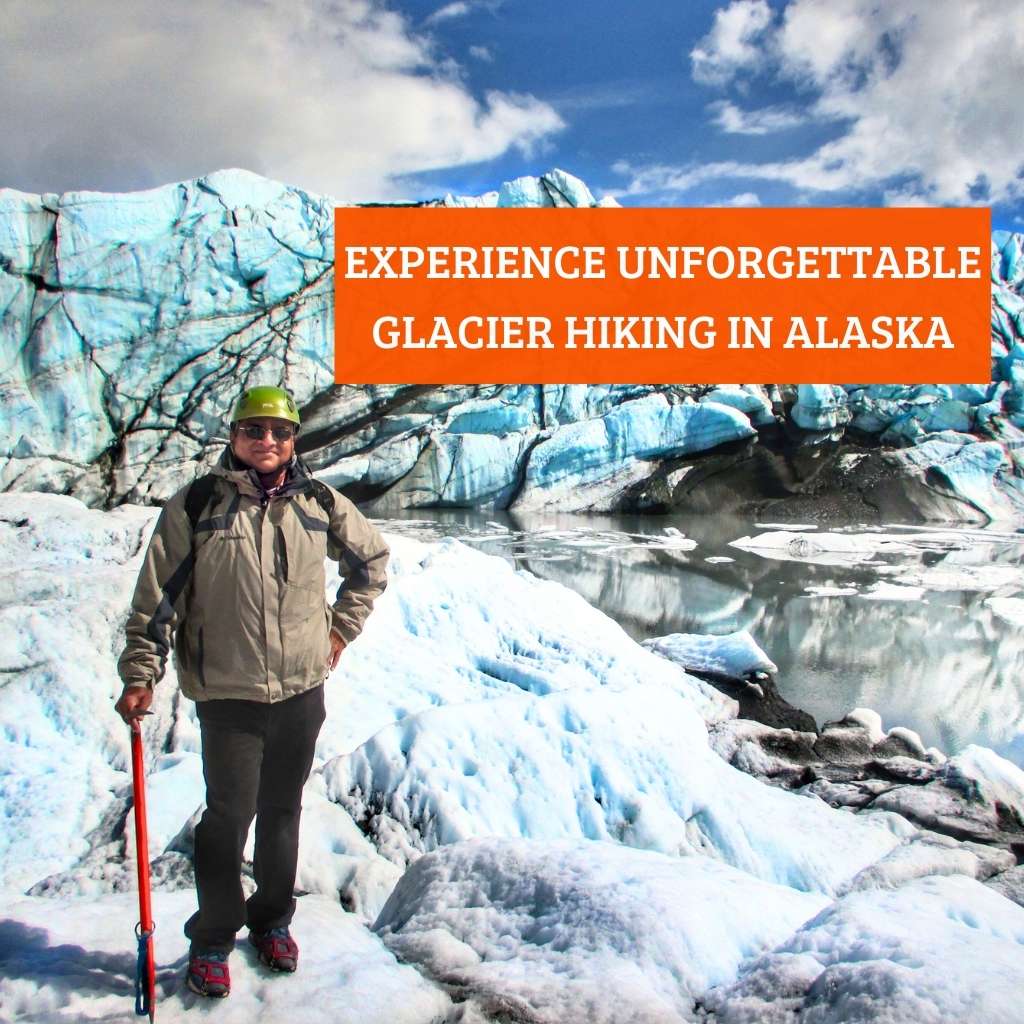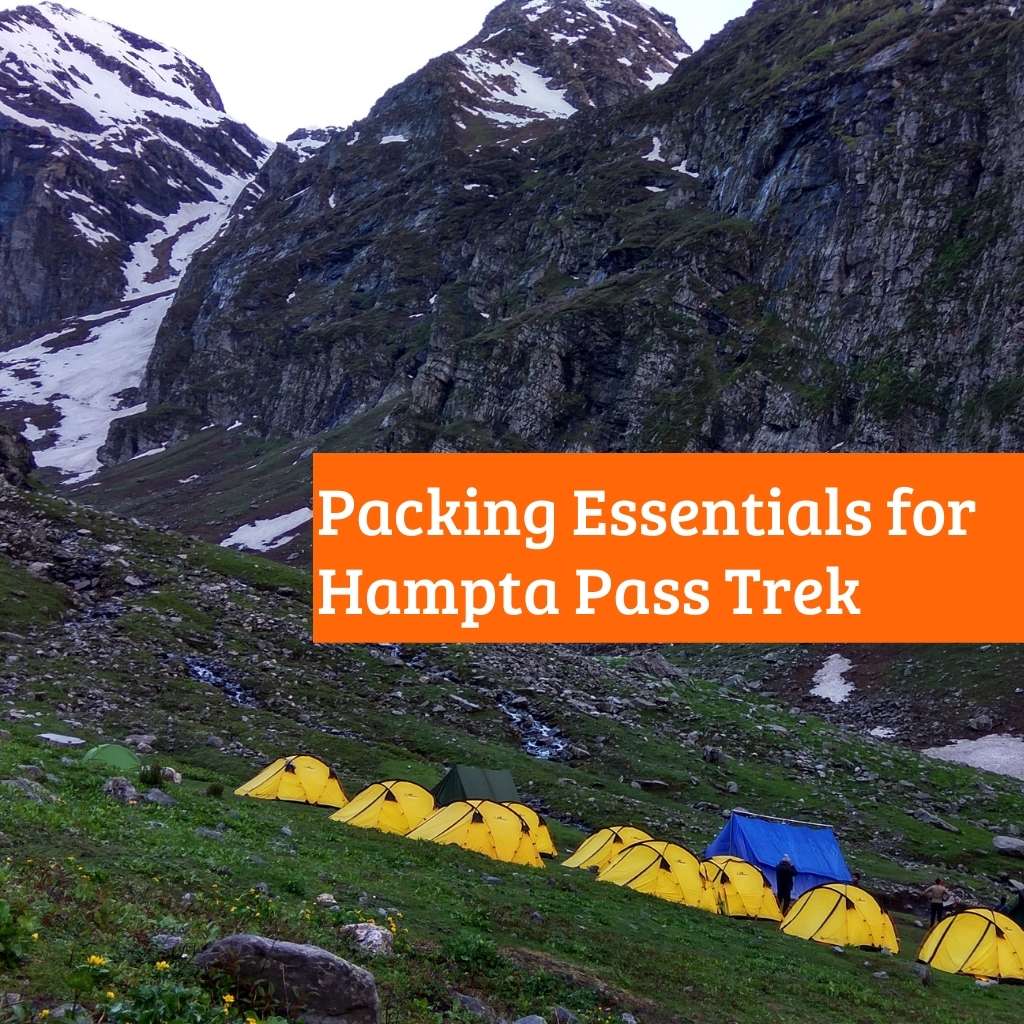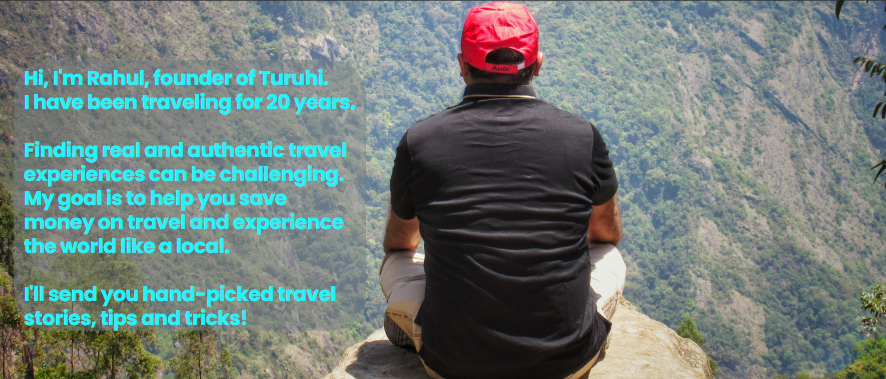Before I decide upon a trek, I always take into consideration its difficulty level as it is one of the most important factors. The key to finding an appropriate trek is to know your body, so I select treks that are appropriate to my fitness level and experience. Some treks are suitable for beginners, while others are challenging and require a high level of endurance and stamina. The Himalayas offer a wide range of trekking destinations. The Hampta Pass is one of the most popular treks in the Himalayas. Let us discuss here the factors that affect Hampta Pass trek difficulty and provide essential tips for overcoming it.

Introduction
A trek is a popular adventure activity that allows you to experience the natural beauty of a place in a unique way. There is no doubt that the Hampta Pass trek offers breathtaking views of the Himalayan range. This moderate-level trek takes you through verdant valleys, scenic waterfalls, and snow-capped mountains.
Overview of Hampta Pass Trek
The Himalayan peak of Hampta Pass is located in Himachal Pradesh, India. In order to embark on this trek, you must first reach the picturesque town of Manali. The trail covers a distance of approximately 29 kilometers by foot, reaching an altitude of 14,100 feet. It usually takes 7-8 days to complete the Hampta Pass trek itinerary, which provides an excellent opportunity to see the region’s natural beauty.
Importance of Assessing Difficulty Level
You need to determine the difficulty level of a trek in order to be physically and mentally prepared for the challenges it presents. Having an understanding of the difficulty level of a trek will enable you to plan and prepare accordingly, reducing the likelihood of unpleasant surprises along the way.
What Makes Hampta Pass a Popular Trekking Destination
The Hampta Pass is a popular trekking destination situated in the Pir Panjal Range of the Himalayas. The trek offers scenic beauty with snow-capped peaks, alpine forests, and glaciers. The moderate difficulty level of the trek makes it accessible to both intermediate and experienced trekkers. Trekking through picturesque campsites and learning about local culture adds to the charm. Moreover, the trail provides panoramic views of snow capped peaks, picturesque valleys, and glaciers, making it a photographer’s paradise. A rich cultural heritage and local food add to the overall trekking experience in the region.
Factors Affecting the Difficulty Level
There are several factors that contribute to the difficulty level of the Hampta Pass trek. Let’s discuss them in more detail.
Altitude and Oxygen Levels
The altitude and oxygen levels are two of the most significant factors affecting the Hampta Pass trek’s difficulty level. The air becomes thinner as you ascend, making it harder to breathe. This can cause altitude sickness, a challenging condition to cope with.
Weather and Terrain
The weather and terrain also play an important role in determining the difficulty level of the trek. A rocky and uneven terrain makes the trail difficult to navigate, especially in bad weather. It is important for you to know when is the best time to visit Hampta Pass so that you can enjoy the best weather.
Distance and Elevation Gain
When trekking, the distance and elevation gain of the trail play a significant role in determining the difficulty level. Hampta Pass, one of the most popular Himalayan treks in India, covers around 29 km and climbs to 14,100 feet. As a result, the trek is physically exhausting and requires a high level of endurance and fitness. When embarking on an adventure like this, I always recommend getting physically fit first.
Altitude Sickness
It is common for trekkers to experience altitude sickness when climbing to higher elevation. Here is a brief overview of the definition, symptoms, prevention, and treatment of altitude sickness.
Altitude sickness definition and symptoms
Altitude sickness occurs when your body does not receive enough oxygen at high altitudes. Headaches, nausea, dizziness, and shortness of breath are some of the symptoms of altitude sickness.
Prevention of Altitude Sickness
It is essential to gradually acclimatize your body to high altitudes in order to avoid altitude sickness. It is therefore recommended to spend at least a day in Prini, the base camp of the Hampta Pass trek. Furthermore, it is important to stay hydrated and avoid alcohol and smoking.
Treatment of Altitude Sickness
It is imperative for trekkers to take immediate action if they experience altitude sickness during their trek. The treatment options include descending to a lower altitude, resting, and taking medication.
Minimum Fitness Level
Hampta Pass is a moderately difficult trek that requires a good level of fitness and endurance. You’ll be trekking for hours on challenging terrain.
Physical Fitness and Endurance
To successfully complete the Hampta Pass trek, it’s essential to have a good level of physical fitness and endurance. You should focus on strengthening your muscles and building a strong cardiovascular system. It is recommended that you engage in regular exercises and outdoor activities such as hiking, running, and cycling. You will have a much more rewarding and enjoyable experience this way.
Know your pre-existing conditions
Before embarking on any trek, you should assess your physical health and consult a doctor if necessary. It is particularly important for those with pre-existing medical conditions, since altitude and physical demands can exacerbate some conditions. You should be extra careful if you have asthma, high blood pressure, diabetes, or high cholesterol. It is essential to consult your physician and follow his advice before embarking on a trek like Hampta Pass.
What preparation did I do?
The Hampta Pass trek requires a lot of physical preparation, so I started preparing 4-6 weeks before the trek. As part of my preparation, I did cardio, strength training, and hike practice. I took up running, cycling, and swimming to build endurance and stamina. Strength exercises like squats, lunges, and calf raises also helped me get stronger and more stable, which is crucial for navigating rough terrain.
Because I knew I’d be carrying a backpack on the trek, I practiced hiking with a backpack. It also helped me prepare for the long hours of hiking. I even trained on similar terrain to familiarize myself with the terrain I would be trekking on. It helped me feel confident and prepared for the trek by acclimatizing me to the conditions.
How to overcome these challenges?
There are a number of ways to ensure a safe and enjoyable trek to Hampta Pass, despite its challenges. I have followed these steps and I have benefited from them. You should as well.
Hydration and Nutrition
As a trekker, I learnt the importance of staying hydrated while on the trek. The high altitude and strenuous hiking can take a toll on your body, and dehydration can exacerbate the effects of altitude sickness. To combat this, I made sure to drink at least 2-3 liters of water each day, and carried a refillable water bottle with me at all times.
I also made sure to pack high-energy snacks like energy bars and nuts to keep my body fueled throughout the trek. These snacks not only provided me with the necessary energy to keep going, but they were also a tasty treat after a long day of hiking.
Clothing and Gear
You should pack carefully for the Hampta Pass trek as the right gear can make a huge difference in your comfort and safety. I packed warm clothing such as thermals, gloves, and a beanie since temperatures can drastically drop at higher altitudes. My hiking boots with ankle support helped me maintain my balance on the rocky terrain. In addition, you should carry a sturdy backpack that can accommodate all of your necessary items. I always keep a waterproof jacket with me in case of sudden weather changes. Having a plan for every situation on the trek is crucial.
Rest and Acclimatization
My experience as a trekker taught me the value of regular breaks and rest. As a result, I was able to avoid exhaustion and altitude sickness. In addition to that, I discovered that my body needed time to adjust to the change in oxygen levels. It was therefore crucial to allow a day or two for acclimatization to the higher altitude.
Mental Preparation
Trekking isn’t just about physical preparation; mental preparation is just as important. The real challenge is staying motivated and positive during the trek. I always take breaks and celebrate small victories along the way to keep a positive mindset to overcome challenges.
Now that you’re ready…
The Hampta Pass trek is not for the faint of heart, but it’s worth the effort. As you trek across challenging terrain and enjoy breathtaking scenery, you will feel a sense of accomplishment at the end of the day. You will appreciate the beauty of nature even more after completing this trek. Get ready to take on the challenge, make new friends, and create lasting memories.
Disclaimer:
This blog may contain affiliate links. At no extra cost to you, we may get a small commission if you buy anything. All products and services we endorse have been personally used or come highly recommended to us. These incomes allow us to keep the community supported and ad-free.





Add a Comment